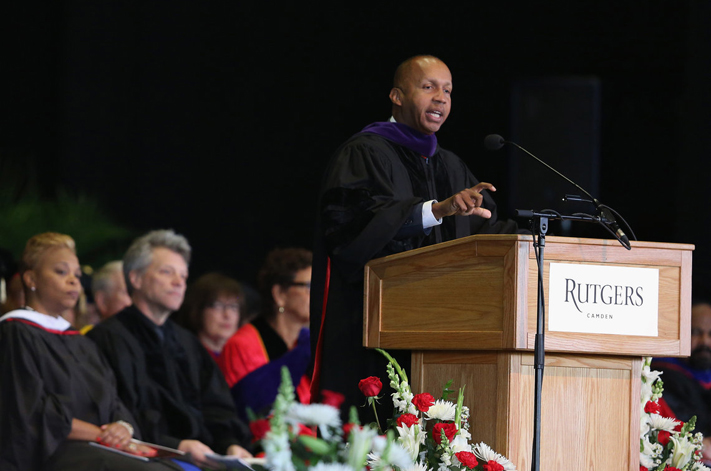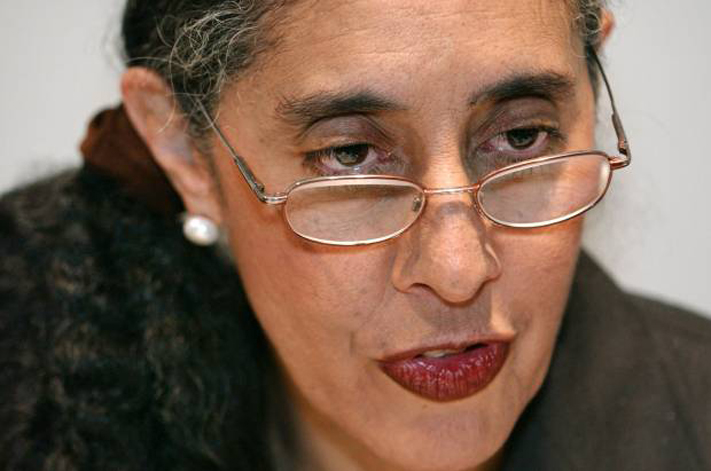Project Description
'A Broader Bolder Approach to Education; Mission Statement.
A Broader, Bolder Approach to Education
More than a half century of research, both here and abroad, has documented a powerful association between social and economic disadvantage and low student achievement. Weakening that association is the fundamental challenge facing America’s education policy makers.
Education policy in this nation has typically been crafted around the expectation that schools alone can offset the full impact of low socioeconomic status on learning. Schools can—and have—ameliorated some of the impact of social and economic disadvantage on achievement. Improving our schools, therefore, continues to be a vitally important strategy for promoting upward mobility and for working toward equal opportunity and overall educational excellence.
Evidence demonstrates, however, that achievement gaps based on socioeconomic status are present before children even begin formal schooling. Despite the impressive academic gains registered by some schools serving disadvantaged students, there is no evidence that school improvement strategies by themselves can close these gaps in a substantial, consistent, and sustainable manner.
Nevertheless, there is solid evidence that policies aimed directly at education-related social and economic disadvantages can improve school performance and student achievement. The persistent failure of policy makers to act on that evidence—in tandem with a school-improvement agenda—is a major reason why the association between social and economic disadvantage and low student achievement remains so strong.
The No Child left Behind (NClB) Framework Cannot by Itself Meet the Challenge,
Through its disaggregated reporting requirements, No Child Left Behind and the public discussion it has supported have cast a bright light on the achievement gap, on underachieving disadvantaged children, and on persistently underachieving schools.
The potential effectiveness of NCLB has been seriously undermined, however, by its acceptance of the popular assumptions that bad schools are the major reason for low achievement, and that an academic program revolving around standards, testing, teacher training, and accountability can, in and of itself, offset the full impact of low socioeconomic status on achievement. The effectiveness of NCLB has also been weakened by its unintended side effects, such as a narrowing of the curriculum, and by the incentives that NCLB generates for schools to focus instruction on students who are just below the passing point, at the expense of both lower-performing and higher-performing students. NCLB also requires a rate of achievement growth that exceeds the results of even the most effective school improvement measures, alone or in combination, either here or abroad.
A Broader, Bolder Approach for education
Given the limitations of conventional policy, including NCLB, we believe that the time has come for U.S. policy makers to rethink their assumptions and adopt a broader, bolder approach for education—one that is powerful enough to produce a large reduction in the current association between social and economic disadvantage and low student achievement.
This broader, bolder approach breaks with the past by em- bracing an expanded concept of education in two respects. First, conventional education policymaking focuses on learning that occurs in formal school settings during the years from kindergarten through high school. The new approach recognizes the centrality of formal schooling, but it also recognizes the importance of high-quality early childhood and pre-school programs, after-school and summer programs, and programs that develop parents’ capacity to support their children’s education. It seeks to build working relationships between schools and surrounding community institutions.
Second, the broader, bolder approach pays attention not only to basic academic skills and cognitive growth narrowly defined, but to development of the whole person, including physical health, character, social development, and non-academic skills, from birth through the end of formal schooling. It assigns value to the new knowledge and skills that young people need to become effective participants in a global environment, including citizenship, creativity, and the ability to respect and work with persons from different backgrounds.
The broader, bolder approach we support is also informed by research. While recognizing that the relations between cause and effect in education are often ambiguous, the new approach incorporates policies and practices whose effectiveness is reinforced by the preponderance of evidence presently available from serious research. In particular, the approach is informed by a large and powerful body of literature from researchers over the years who have examined the powerful impact on student achievement of numerous contextual and environmental factors such as early learning, parenting, health, poverty, and the cognitive, cultural, and character development that occurs outside schools.
Characteristics of the Broader, Bolder Approach
Consistent with these two principles, we propose a broader, bolder approach with the following four priorities:
- Continue to pursue school improvement efforts.
Research support is strongest for the benefits of small class sizes in the early grades for disadvantaged children, and for attracting and retaining high-quality teachers to work in hard-to-staff schools. Many other school improvement efforts commonly advocated in today’s policy debates have merit and should be pursued, such as improved professional development and school leader- ship; better coordination between pre-school, elementary, secondary, and higher education; the use of assessments that provide guidance to teachers and principals; and better instruction that makes a high-quality college preparatory curriculum accessible to all students. Educational planners must recognize that some students, such as recent immigrants, arrive at school with distinctive needs that warrant special attention. - Increase investment in developmentally appropriate and high-quality early childhood, pre-school, and kindergarten education. Every American child should arrive at the starting line of first grade ready and able to learn. Such a goal is consistent with Americans’ strong belief that every person should have the opportunity to make the most of his or her abilities. It is also a prerequisite for weakening the link between socioeconomic background and achievement.
Increased investment in the early years is a natural base for an expanded education policy approach. The country’s major longstanding program in this area, Head Start, enjoys widespread public support. Research suggests positive social, economic, and behavioral impacts on the lives of low-income children who participated in quality education programs prior to entering formal schooling. The operative word here is “quality.” Assessing the best re- search in this area, Nobel Laureate in Economics James J. Heckman describes investments in disadvantaged young children as “a rare public policy initiative that promotes fairness and social justice and at the same time promotes productivity in the economy and in society at large.”
- Increase investment in health ser vices. Research sup- ports the provision of prenatal care for all pregnant women and preventive and routine pediatric, dental, and optometric care for all infants, toddlers, and schoolchildren, in order to minimize the extent to which health problems become obstacles to success in school. Such care can be facilitated by programs such as nurse home-visiting, Early Head Start, and clinics that improve parents’ capacity to monitor and care for their own and their children’s health. Expanding the avail- ability of health insurance for low-income families is a positive step, but insurance should be augmented by ensuring that families have access to medical practitioners in their neighborhoods.
One particularly promising policy is to locate full-service health clinics in schools. Such clinics offer a way to over- come the absence of primary care physicians in low- income areas. They also address the fact that poor parents are often unable to take time from work for preventive and other health care services.
- Pay more attention to the time students spend out of school. A body of research has shown that much of the achievement gap is rooted in what occurs outside of formal schooling. By and large, low-income students learn as rapidly as more-privileged peers during the hours spent in school. Where they lose ground, though, is in their lack of participation in learning activities during after-school hours and summer vacations. Such findings suggest that policy makers should increase investments in areas such as longer school days, after-school and summer programs, and school-to-work programs with demonstrated track records.
Successful programs do not exclusively focus on academic remediation. Rather, they provide disadvantaged children with the cultural, organizational, athletic, and academic enrichment activities that middle-class parents routinely make available to their own children.
The new education approach we propose should be implemented in a careful and deliberate fashion, with ongoing modification as new evidence becomes available. The approach is equally applicable to federal, state, or local policy making. However, the federal government’s historic role in equalizing educational opportunity implies a federal obligation to help states meet the needs of disadvantaged youngsters more fully.
The public has a right to hold schools accountable for raising student achievement. However, test scores alone cannot de- scribe a school’s contribution to the full range of student out- comes. New accountability systems should combine appropriate qualitative and quantitative methods, and they will be considerably more expensive than the flawed accountability systems currently in use by the federal and state governments.
We believe that it is both possible and necessary to weaken the link between social and economic disadvantage and low student achievement. A policy strategy that combines continued school reform with efforts to address the roots of low achievement can be effective in doing so.
Facing the Challenge
It is a violation of the most basic principles of social justice that a country as wealthy as ours denies the opportunities that come with a high-quality education to a substantial proportion of our young people. The increasingly inter-connected world of the 21st century places a premium on the preparation of all of our young people to take their places as effective workers, citizens, and family members.
America has a decision to make. We can continue to pursue education strategies that focus on schools alone and on narrow, test-based accountability—and be content with the modest improvements long associated with this approach. Or we can ratchet up our ambitions and adopt a new and expanded strategy with the capacity to improve student achievement and adult outcomes more effectively and efficiently.
Weakening the link between social and economic disadvantage and low student achievement—leaving no child behind— is an urgent national priority. With our population aging and schools serving a growing number of disproportionately poor immigrant children, the future viability of our Social Security, health, and other social institutions will be affected by how well we educate young people of all backgrounds.
For the sake of enabling all of America’s children to pursue and realize the American dream, for themselves and for our nation, we urge policy makers to embrace this broader, bolder approach to education.
Co-Chairs:
Duke University
Pedro Noguera
New York University
Tom Payzant
Harvard Graduate School of Education;
Assistant Secretary, U.S. Dept. of Education (’93-’95)
Task Force Members & Signers:
Education Testing Service
Julian Bond
Chairman, NAACP
Barbara T. Bowman
Co-Founder, The Erikson Institute
T. Berry Brazelton, M.D.
Pediatrician and Author
Richard H. Carmona, M.D.
University of Arizona;
U.S. Surgeon General (’02-’06)
James Comer, M.D.*
Yale University
Ernesto Cortes, Jr.*
Director, Southwest Industrial Areas Foundation
Mark E. Courtney
Executive Director, Partners for Our Children
Rudolph F. Crew*
Superintendent, Miami-Dade Public Schools
Linda Darling-Hammond
Stanford University; Executive Director,
National Commission on Teaching and America’s Future
John DiIulio
University of Pennsylvania; White House
Director, Office of Faith-Based and Community Initiatives (’01)
Jan Harp Domene
President, National PTA
Arne Duncan
Superintendent, Chicago Public Schools
Peter Edelman
Georgetown University Law Center; Asst. Secretary, U.S. Dept. of Health and Human Services (’93-’96)
Joycelyn Elders, M.D.*
University of Arkansas;
U.S. Surgeon General (’93-’94)
Edward B. Fiske*
Journalist; Education Editor
The New York Times (’74-’91)
Milt Goldberg
Policy Consultant; Executive Director, A Nation At Risk commission (’83);
Director, Office of Research, U.S. Dept.of Education (’89-’92)
John I. Goodlad
President, Institute for Educational Inquiry
David Grissmer*
University of Virginia
Beverly L. Hall
Superintendent, Atlanta Public Schools
James Heckman
University of Chicago;
Recipient, Nobel Prize in Economics (’00)
John H. Jackson*
President, The Schott Foundation; Chief Policy Officer, NAACP (’05-’07)
Christopher Jencks*
Harvard University
Sharon Lynn Kagan*
Columbia University; Yale University
Richard Kazis*
Vice President, Jobs for the Future
Henry Kelly
President, Federation of American Scientists
Rev. Dr. Michael Kinnamon
General Secretary, National Council of Churches
Indiana University; Director, Division of Adolescent and School
Health, U.S. Centers for Disease Control and Prevention (’88-’03)
Karen Lashman*
Vice President of Policy, Children’s Defense Fund
Arthur Levine*
President, Woodrow Wilson Foundation
Michael Levine
Executive Director, Joan Ganz Cooney Center at
Sesame Workshop
Glenn C. Loury*
Brown University
Robert L. Lynch
President and CEO, Americans for the Arts
Julianne Malveaux
President, Bennett College for Women
Ray Marshall*
University of Texas; U.S. Secretary of Labor (’77-’81)
Deborah Meier
Founder, Central Park East Schools
Richard J. Mouw
President, Fuller Theological Seminary
Susan B. Neuman
University of Michigan; Asst. Secretary, U.S. Dept. of Education (’01-’03)
Joseph M. O’Keefe, S.J.
Dean, Lynch School of Education, Boston College
Hugh Price*
The Brookings Institution;
President, National Urban League (’94-’03)
William Raspberry
Former Columnist, The Washington Post
Diane Ravitch
New York University; Asst. Secretary, U.S. Dept. of Education (’91-’93)
Janet Reno
U.S. Attorney General (’93-’01)
Norman Rice
Enterprise Community Partners; Mayor, Seattle (’90-’98); President, U.S. Conference of Mayors (’95-’96)
Julius B. Richmond, M.D.
Harvard Medical School; U.S. Surgeon General (’77-’81)
Bella Rosenberg*
Policy Consultant; Asst. to Albert Shanker, President of the American Federation of Teachers (’83-’97)
Richard Rothstein*
Economic Policy Institute; Education Columnist,
The New York Times (’99-’02)
Robert B. Schwartz*
Harvard Graduate School of Education; President, Achieve (’97-’02)
Ted Sizer
Chairman Emeritus, Coalition of Essential Schools
Marshall S. Smith
Under Secretary, U.S. Dept. of Education (’93-’01);
Dean, School of Education, Stanford University (’86-’93)
James Gustave Speth
Dean, School of Environmental Studies, Yale University
William Spriggs*
Chair, Department of Economics, Howard University
Carola Suarez-Orozco*
New York University
Marcelo Suarez-Orozco*
New York University
Mary Catherine Swanson
Founder, AVID (Advancement Via Individual Determination)
Rachel B. Tompkins*
President, Rural School and Community Trust
Jane Waldfogel*
Columbia University
William Julius Wilson
Harvard University
Alan Wolfe
Director, Boisi Center for Religion and American Public Life, Boston College
* Members of the task force who drafted this statement. The task force was convened by:
Lawrence Mishel
President, Economic Policy Institute











